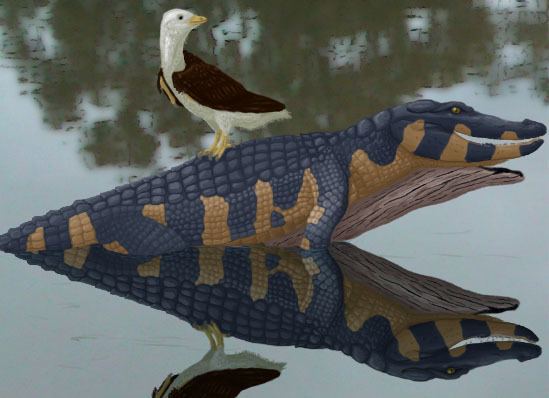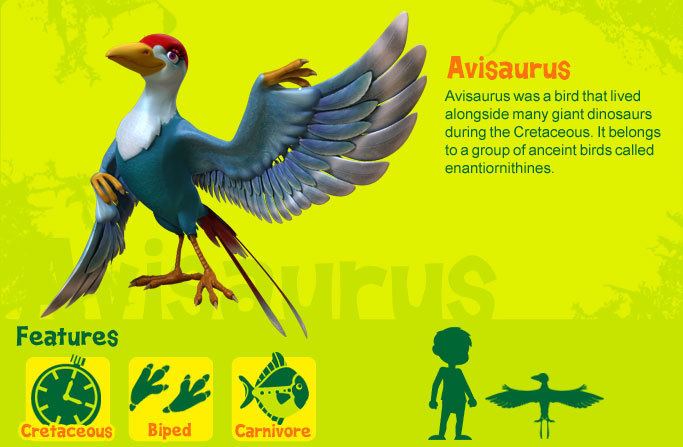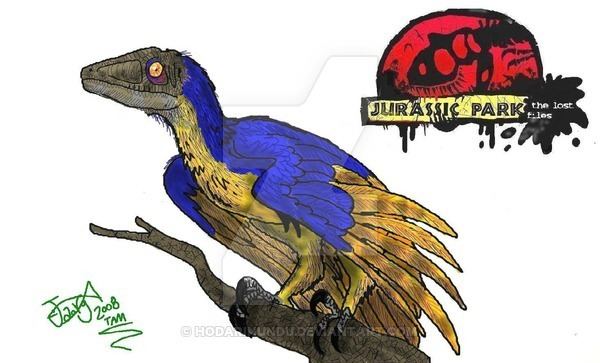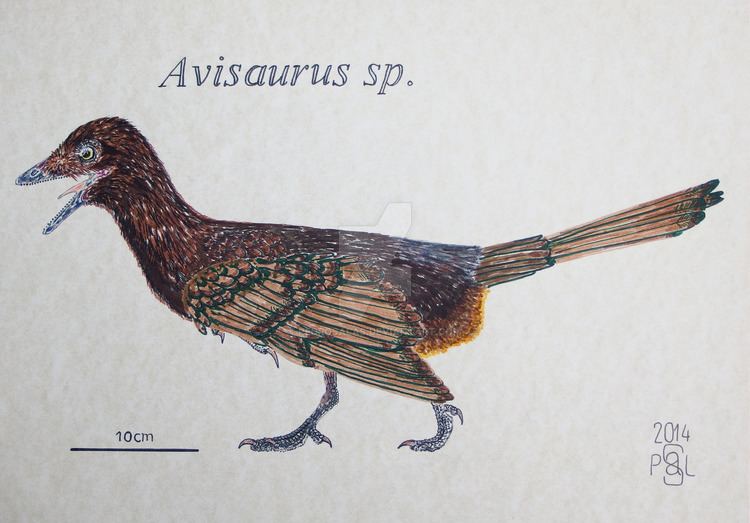Rank Genus | Phylum Chordata | |
 | ||
Similar Enantiornis, Enantiornithes, Anoplosaurus, Chirostenotes, Denversaurus | ||
Avisaurus (meaning "bird lizard") is a genus of enantiornithine bird from the Late Cretaceous of North America. Two species are known; the type species A. archibaldi and A. gloriae. Both are known only from single fossilized bones of the foot — the tarsometatarsus.
Contents

Both species of Avisaurus are known from the humid low-lying swamps, lakes, and river basins of the western shore of the Western Interior Seaway, and from the much more arid uplands between that area and the Cordilleran Overthrust Belt which eventually formed the Rocky Mountains.

This genus belongs to the enantiornithine family Avisauridae, which also contains similar animals from South America such as Soroavisaurus and Neuquenornis In the Late Cretaceous the Americas were still separated by a branch of the Tethys Ocean.

The presence of reported Avisaurus remains in both North and South America has been put forward as evidence that faunal changes in the southern half of North America during the Lancian resulted from an immigration event of South American taxa moving north.
Avisaurus archibaldi
A. archibaldi was discovered in the Late Cretaceous Hell Creek Formation of North America (Maastrichtian, from c.70.6-66 million years ago), making it one of the last enantiornithids. It was collected in 1975 in the UCMP locality V73097, in Garfield County, Montana, USA.
A. archibaldi is represented by a single fossil of a tarsometatarsus in the collection of the University of California Museum of Paleontology. It has the catalog number UCMP 117600. It was initially described as the left tarsometatarsus of a non-avian theropod by Brett-Surman and Paul in 1985. It was later redescribed as the right tarsometatarsus of an enantiornithine bird by Chiappe in 1992.
The specimen has a maximum length of 73.9 mm, making it one of the largest known tarsometatarsi of an enantiornithine.
It is named after J. David Archibald, its discoverer, from The University of California, Berkeley.
Avisaurus gloriae
A. gloriae was discovered in the Campanian Two Medicine Formation (c. 77 - 71 mya). It was collected in the MOR locality TM-068, Glacier County, Montana, USA.
A. gloriae is represented by a single fossil of a right tarsometatarsus in the collection of the Museum of the Rockies of Montana State University. It has catalog number MOR 553E/6.19.91.64. It was collected in 1991. It was described by Varrichio and Chiappe in 1995.
The specimen has a maximum length of 30.9mm.
It is named after Gloria Siebrecht, a Volunteer Preparator for the Museum of the Rockies.
The Brett-Surman Paper
The paper by Brett-Surman and Paul in 1985 explicitly considered the possibility that A. archibaldi was an enantiornithine. The authors described and named UCMP 117600 formally, but they looked at other enantiornithine material, including the "metatarsus" PVL 4690 from Argentina. The authors assigned this latter fossil to Avisaurus sp. From this they concluded that members of the genus Avisaurus existed in both North and South America in the Late Cretaceous. Moreover, the authors concluded that the length/width ratio and degree of metacarpal fusion of these bones were more like those of non — avian dinosaurs. A terrestrial dinosaur genus in both continents would then support Brett — Surman's theory that there had been a land connection between the two continents.
Further discoveries and further study by Chiappe showed that all of the material belonged to enantiornithine birds, and that PVL 4690 was actually a bird called Soroavisaurus.
